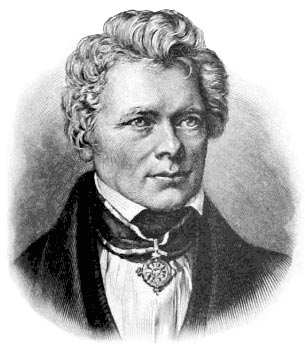|
Friedrich Wilhelm Konow
Friedrich Wilhelm Konow (11 July 1842, in Mechow – 18 March 1908, in Teschendorf) was a German entomologist who specialised in Hymenoptera especially Tenthredinidae. Konow was a vicar studying entomology in his spare time. He wrote ''Familie Tenthredinidae'' in Wytsman's, ''Genera Insectorum'' ( Fascicle 29) 176 pp. 1905) and very many short papers describing new species of worldwide Tenthredinidae. His collection is shared between the German Entomological Institute, Biozentrum Grindel und Zoologisches Museum, Hamburg and Museum für Naturkunde in Berlin Berlin is Capital of Germany, the capital and largest city of Germany, both by area and List of cities in Germany by population, by population. Its more than 3.85 million inhabitants make it the European Union's List of cities in the European U ... Publications *Konow, 1899''Einige neue Chalastogastra-Gattungen und Arten''. - Entomologische Nachrichten 25:73-79 References *Musgrave, A. 1932 ''Bibliography of A ... [...More Info...] [...Related Items...] OR: [Wikipedia] [Google] [Baidu] |
Mechow
Mechow is a municipality in the district of Lauenburg, in Schleswig-Holstein, Germany Germany, officially the Federal Republic of Germany (FRG),, is a country in Central Europe. It is the most populous member state of the European Union. Germany lies between the Baltic and North Sea to the north and the Alps to the sou .... References Municipalities in Schleswig-Holstein Herzogtum Lauenburg {{HerzogtumLauenburg-geo-stub ... [...More Info...] [...Related Items...] OR: [Wikipedia] [Google] [Baidu] |
Teschendorf
Teschendorf is a part of Burg Stargard in the district Mecklenburgische Seenplatte, in Mecklenburg-Vorpommern, Germany. Villages in Mecklenburg-Western Pomerania {{MecklenburgischeSeenplatte-geo-stub ... [...More Info...] [...Related Items...] OR: [Wikipedia] [Google] [Baidu] |
Hymenoptera
Hymenoptera is a large order of insects, comprising the sawflies, wasps, bees, and ants. Over 150,000 living species of Hymenoptera have been described, in addition to over 2,000 extinct ones. Many of the species are parasitic. Females typically have a special ovipositor for inserting eggs into hosts or places that are otherwise inaccessible. This ovipositor is often modified into a stinger. The young develop through holometabolism (complete metamorphosis)—that is, they have a wormlike larval stage and an inactive pupal stage before they mature. Etymology The name Hymenoptera refers to the wings of the insects, but the original derivation is ambiguous. All references agree that the derivation involves the Ancient Greek πτερόν (''pteron'') for wing. The Ancient Greek ὑμήν (''hymen'') for membrane provides a plausible etymology for the term because species in this order have membranous wings. However, a key characteristic of this order is that the hindwings are co ... [...More Info...] [...Related Items...] OR: [Wikipedia] [Google] [Baidu] |
Tenthredinidae
Tenthredinidae is the largest family of sawflies, with well over 7,500 species worldwide, divided into 430 genera. Larvae are herbivores and typically feed on the foliage of trees and shrubs, with occasional exceptions that are leaf miners, stem borers, or gall makers. The larvae of externally feeding species resemble small caterpillars. As with all hymenopterans, common sawflies undergo complete metamorphosis. The family has no easily seen diagnostic features, though the combination of five to nine antennal flagellomeres plus a clear separation of the first abdominal tergum from the metapleuron can reliably separate them. These sawflies are often black or brown, and 3 to 20 mm long. Like other sawflies, they lack the slender "wasp-waist", or petiole, between the thorax and abdomen, characteristic of many hymenopterans. The mesosoma and the metasoma are instead broadly joined. The Tenthredinidae are also often somewhat dorsoventrally flattened, which will distinguish t ... [...More Info...] [...Related Items...] OR: [Wikipedia] [Google] [Baidu] |
Vicar
A vicar (; Latin: '' vicarius'') is a representative, deputy or substitute; anyone acting "in the person of" or agent for a superior (compare "vicarious" in the sense of "at second hand"). Linguistically, ''vicar'' is cognate with the English prefix "vice", similarly meaning "deputy". The title appears in a number of Christian ecclesiastical contexts, but also as an administrative title, or title modifier, in the Roman Empire. In addition, in the Holy Roman Empire a local representative of the emperor, perhaps an archduke, might be styled " vicar". Roman Catholic Church The Pope uses the title ''Vicarius Christi'', meaning the ''vicar of Christ''. In Catholic canon law, ''a vicar is the representative of any ecclesiastic'' entity. The Romans had used the term to describe officials subordinate to the praetorian prefects. In the early Christian churches, bishops likewise had their vicars, such as the archdeacons and archpriests, and also the rural priest, the curate who h ... [...More Info...] [...Related Items...] OR: [Wikipedia] [Google] [Baidu] |
German Entomological Institute
The Senckenberg German Entomological Institute (german: Senckenberg Deutsches Entomologisches Institut, SDEI or DEI) is a German entomological research institute devoted to the study of insects. Founded in 1886, the institute has an extraordinary insect collection and a world-class entomological library. Since 2009, the SDEI has been part of the Senckenberg Nature Research Society. Insect collections The department of Phylogenetic Systematics and Taxonomy of Insects maintains about 3 million pinned insects and uncounted specimens in the wet collection, among others the collections of: *Rudolf von Bennigsen (1824-1902) * Karl Bleyl (1908-1995) *Carl Julius Bernhard Börner (1880-1953) * Peter Friedrich Bouché (1784-1856) *Gustav Breddin (1864-1909) * Adolf Willy Lothar Dieckmann (1920-1990) *Karl Friedrich Ermisch (1898-1970) *Karl Flach (1856-1920) *Gerrit Friese (1931-1990) *Johann Georg Haag-Rutenberg (1830-1880) * Lucas Friedrich Julius Dominikus von Heyden (1838-1915) *W ... [...More Info...] [...Related Items...] OR: [Wikipedia] [Google] [Baidu] |
Hamburg
Hamburg (, ; nds, label=Hamburg German, Low Saxon, Hamborg ), officially the Free and Hanseatic City of Hamburg (german: Freie und Hansestadt Hamburg; nds, label=Low Saxon, Friee un Hansestadt Hamborg),. is the List of cities in Germany by population, second-largest city in Germany after Berlin, as well as the overall List of cities in the European Union by population within city limits, 7th largest city and largest non-capital city in the European Union with a population of over 1.85 million. Hamburg's urban area has a population of around 2.5 million and is part of the Hamburg Metropolitan Region, which has a population of over 5.1 million people in total. The city lies on the River Elbe and two of its tributaries, the River Alster and the Bille (Elbe), River Bille. One of Germany's 16 States of Germany, federated states, Hamburg is surrounded by Schleswig-Holstein to the north and Lower Saxony to the south. The official name reflects History of Hamburg, Hamburg's history ... [...More Info...] [...Related Items...] OR: [Wikipedia] [Google] [Baidu] |
Museum Für Naturkunde
The Natural History Museum (german: Museum für Naturkunde) is a natural history museum located in Berlin, Germany. It exhibits a vast range of specimens from various segments of natural history and in such domain it is one of three major museums in Germany alongside '' Naturmuseum Senckenberg'' in Frankfurt and '' Museum Koenig'' in Bonn. The museum houses more than 30 million zoological, paleontological, and mineralogical specimens, including more than ten thousand type specimens. It is famous for two exhibits: the largest mounted dinosaur in the world (a '' Giraffatitan'' skeleton), and a well-preserved specimen of the earliest known bird, ''Archaeopteryx''. The museum's mineral collections date back to the Prussian Academy of Sciences of 1700. Important historic zoological specimens include those recovered by the German deep-sea Valdiva expedition (1898–99), the German Southpolar Expedition (1901–03), and the German Sunda Expedition (1929–31). Expeditions to fossi ... [...More Info...] [...Related Items...] OR: [Wikipedia] [Google] [Baidu] |
Berlin
Berlin is Capital of Germany, the capital and largest city of Germany, both by area and List of cities in Germany by population, by population. Its more than 3.85 million inhabitants make it the European Union's List of cities in the European Union by population within city limits, most populous city, as measured by population within city limits having gained this status after the United Kingdom's, and thus London's, Brexit, departure from the European Union. Simultaneously, the city is one of the states of Germany, and is the List of German states by area, third smallest state in the country in terms of area. Berlin is surrounded by the state of Brandenburg, and Brandenburg's capital Potsdam is nearby. The urban area of Berlin has a population of over 4.5 million and is therefore the most populous urban area in Germany. The Berlin/Brandenburg Metropolitan Region, Berlin-Brandenburg capital region has around 6.2 million inhabitants and is Germany's second-largest metropolitan reg ... [...More Info...] [...Related Items...] OR: [Wikipedia] [Google] [Baidu] |
German Entomologists
German(s) may refer to: * Germany (of or related to) **Germania (historical use) * Germans, citizens of Germany, people of German ancestry, or native speakers of the German language ** For citizens of Germany, see also German nationality law **Germanic peoples (Roman times) * German language **any of the Germanic languages * German cuisine, traditional foods of Germany People * German (given name) * German (surname) * Germán, a Spanish name Places * German (parish), Isle of Man * German, Albania, or Gërmej * German, Bulgaria * German, Iran * German, North Macedonia * German, New York, U.S. * Agios Germanos, Greece Other uses * German (mythology), a South Slavic mythological being * Germans (band), a Canadian rock band * "German" (song), a 2019 song by No Money Enterprise * ''The German'', a 2008 short film * "The Germans", an episode of ''Fawlty Towers'' * ''The German'', a nickname for Congolese rebel André Kisase Ngandu See also * Germanic (disambiguation ... [...More Info...] [...Related Items...] OR: [Wikipedia] [Google] [Baidu] |






